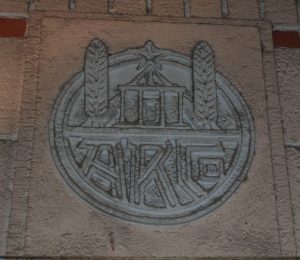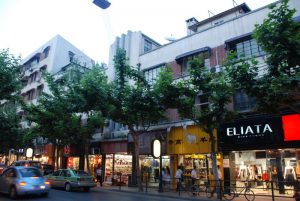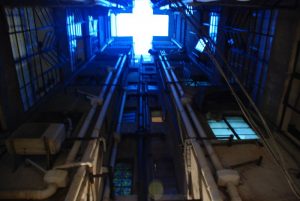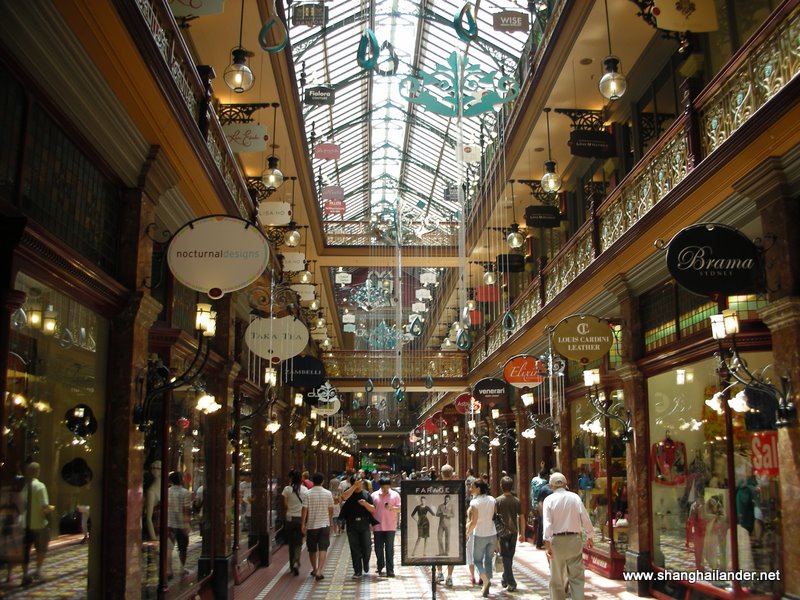 As described in a previous post, the corner or Nanjing Lu and Shi Men lu is on for a massive reconstruction. All old buildings in the area will be destroyed and surely replaced by the usual skyscraper with a mix of shopping center, office building and hotel or serviced apartments. The aim here is probably not create a nice livable environment but to make an architecture that will look great on brochures, a copy of Singapore or Hong Kong… most importantly maximizing profit from the real estate operation with little regard for urban design or preservation of historic architecture.
As described in a previous post, the corner or Nanjing Lu and Shi Men lu is on for a massive reconstruction. All old buildings in the area will be destroyed and surely replaced by the usual skyscraper with a mix of shopping center, office building and hotel or serviced apartments. The aim here is probably not create a nice livable environment but to make an architecture that will look great on brochures, a copy of Singapore or Hong Kong… most importantly maximizing profit from the real estate operation with little regard for urban design or preservation of historic architecture.
Coming back from a long vacation in Australia, the difference between urban development in Sydney or Shanghai is striking. The center of both cities was created in the 1910’s to 1930’s leaving a mix of various styles from the period, from sandstone beaux-arts to innovative Art Deco. Both of them had to re-deploy there city center to accommodate needs of the early 21st century into architecture from the early 20th century. Both cities are facing a very strong increase of population and demand for offices and residential buildings (though the pressure was much higher in Shanghai until recently). Despite these similarities, the difference in development is striking. Sydney’s goal seems to preserve as much as possible and to continue using old buildings that can be kept, creating a mix of old and new keeping the heritage while modernizing the city. Developments such as Queen Victoria Building, arcades on Georges Street (picture above) and the Rock’s area are probably the most well known examples.
Shanghai is still in the process of transforming the city, though after years of work we can surely have an idea about the result by now. The emphasis has been on keeping “troffee” old buildings in the middle of a concrete forest, NOT actually using and preserving heritage buildings at the same time. Although preservation seems to get more attention nowadays, we are still far from the great balance achieved by Australia’s main city into keeping the old while adapting for the new. Visiting Sydney gives a great idea of how Shanghai could have been transformed. Hopefully, it’s not too late for the remaining parts.


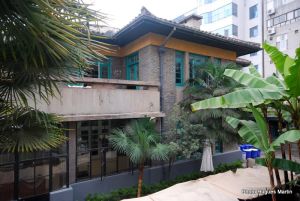 Treaty ports in China were mostly on the seaside (like Shanghai or Tianjin) or on rivers (like Hankou, Wuhan today). However, some were not even near any large water, like Kunming. The city is best known as the gateway to Yunnan touristic areas such as Lijiang, Dali, Shangri-la or Xishuangbanna, but few people have heard about the old French presence in Kunming.
Treaty ports in China were mostly on the seaside (like Shanghai or Tianjin) or on rivers (like Hankou, Wuhan today). However, some were not even near any large water, like Kunming. The city is best known as the gateway to Yunnan touristic areas such as Lijiang, Dali, Shangri-la or Xishuangbanna, but few people have heard about the old French presence in Kunming.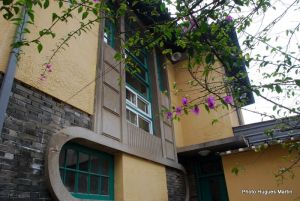 Based in neighbouring Indochina, the French started to look at a railroad from Kunming to Haiphong (port of Hanoi) in 1885.They got the right to build the link from Kunming to Laocai (north Vietnam) in 1898. The Compagnie des Chemins de fer de l’Indo-Chine et du Yunnan (CIY) was in charge of building and running the railway service. France never actually attempted to attach Yunnan to Indochina but the “Transindochinois” railroad was open in 1910 . Conveniently, Kunming became a treaty port in 1908. The train from Kunming to Vietnam still runs today, but apparently only for goods. I had the opportunity to travel on the Vietnam part of the track in 1998, from Hanoi to Laocai and back.
Based in neighbouring Indochina, the French started to look at a railroad from Kunming to Haiphong (port of Hanoi) in 1885.They got the right to build the link from Kunming to Laocai (north Vietnam) in 1898. The Compagnie des Chemins de fer de l’Indo-Chine et du Yunnan (CIY) was in charge of building and running the railway service. France never actually attempted to attach Yunnan to Indochina but the “Transindochinois” railroad was open in 1910 . Conveniently, Kunming became a treaty port in 1908. The train from Kunming to Vietnam still runs today, but apparently only for goods. I had the opportunity to travel on the Vietnam part of the track in 1998, from Hanoi to Laocai and back.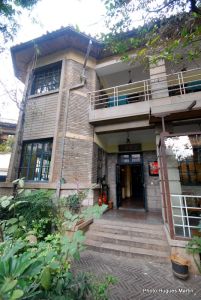 It’s by random that we discovered the remain of Kunming South Station (Garedu Sud, both photos up). The station buildings have become a fancy restaurant, but the building shape is still clearly visible, as well as the art deco motives on entrance wall. The station building is now hidden between ugly apartment buildings and difficult to find. Although the only one shown in the guidebook, it’s not the only reminder of the French presence in Kunming. Located next to the river, the mini French area also encloses a few private villas of western style (photos left and right) next to the station, very similar to some found in Shanghai or in Xiamen. A little hidden between the trees, they also have been turned into restaurant, but are worth a visit. Guards there are a little surprised to see westerns taking pictures having a look is no problem. Those buildings all wear a plate from Kunming municipality, so one can hope that they will be preserved.
It’s by random that we discovered the remain of Kunming South Station (Garedu Sud, both photos up). The station buildings have become a fancy restaurant, but the building shape is still clearly visible, as well as the art deco motives on entrance wall. The station building is now hidden between ugly apartment buildings and difficult to find. Although the only one shown in the guidebook, it’s not the only reminder of the French presence in Kunming. Located next to the river, the mini French area also encloses a few private villas of western style (photos left and right) next to the station, very similar to some found in Shanghai or in Xiamen. A little hidden between the trees, they also have been turned into restaurant, but are worth a visit. Guards there are a little surprised to see westerns taking pictures having a look is no problem. Those buildings all wear a plate from Kunming municipality, so one can hope that they will be preserved.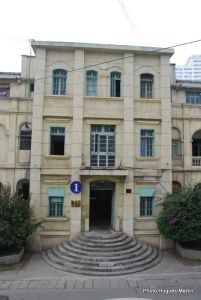 It’s while walking in the surrounding area that we got the biggest surprise. A colonial building is hidden behind the brand new Kunming hospital. Like in Shanghai’s Ruijin hospital, building #1 of Kunming people hospital was probably the original French hospital of Kunming.
It’s while walking in the surrounding area that we got the biggest surprise. A colonial building is hidden behind the brand new Kunming hospital. Like in Shanghai’s Ruijin hospital, building #1 of Kunming people hospital was probably the original French hospital of Kunming.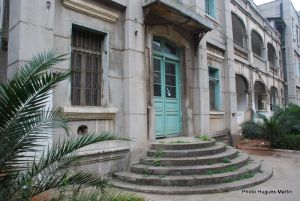
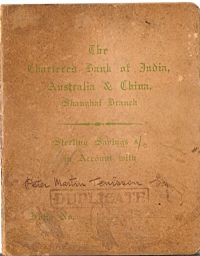
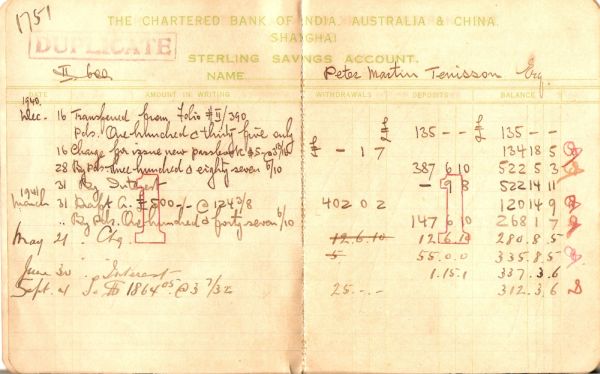







 The Royal Asiatic Society in Shanghai was an association created to promote “science, literature and art” in relation to Asia and China”. Born in 1857 it grew so much that it had a building near the Bund (picture left), that hosted a museum and a library. A large part of the museum collection (mostly stuffed birds and animals) is today in the Shanghai museum of natural history and most of the library ended up in Xu Jia Hui library along with the Bibliotheca Zikawei from the Jesuits fathers… but the RAS building still stands (picture left). The society published a journal 4 times a year, publishing articles related to Asia and China. In the city of money and trade, a small group of people was working hard to develop culture and intellectual activities.
The Royal Asiatic Society in Shanghai was an association created to promote “science, literature and art” in relation to Asia and China”. Born in 1857 it grew so much that it had a building near the Bund (picture left), that hosted a museum and a library. A large part of the museum collection (mostly stuffed birds and animals) is today in the Shanghai museum of natural history and most of the library ended up in Xu Jia Hui library along with the Bibliotheca Zikawei from the Jesuits fathers… but the RAS building still stands (picture left). The society published a journal 4 times a year, publishing articles related to Asia and China. In the city of money and trade, a small group of people was working hard to develop culture and intellectual activities.
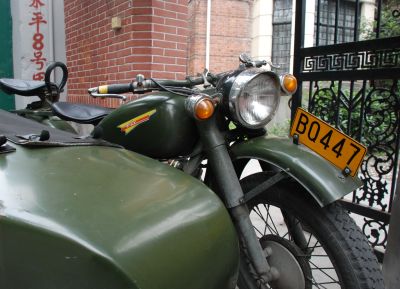
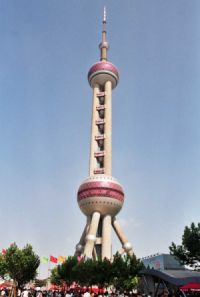 Shanghai history museum is one of these things that has been on my to-do list since several years. It took a rainy Sunday to get me to visit it. Focusing on 1920’s Shanghai, it would be perfect somewhere in the old concessions, in a renovated old house recreating colonial charm. At the contrary, it is located under the Oriental Pearl Tower, in the hear of Lujiazui skyscraper’s field. Going there on a rainy Sunday I was not expecting much, but it was a nice surprise.
Shanghai history museum is one of these things that has been on my to-do list since several years. It took a rainy Sunday to get me to visit it. Focusing on 1920’s Shanghai, it would be perfect somewhere in the old concessions, in a renovated old house recreating colonial charm. At the contrary, it is located under the Oriental Pearl Tower, in the hear of Lujiazui skyscraper’s field. Going there on a rainy Sunday I was not expecting much, but it was a nice surprise. I still don’t understand how come I did not see this book in Shanghai… but bought it in Beijing instead. “The Unexpurgated Diary of a Shanghai Baby” is captioned by Graham Earnshaw as his “favorite book on old Shanghai by a long margin”. I knew the name of Graham Earnshaw throught
I still don’t understand how come I did not see this book in Shanghai… but bought it in Beijing instead. “The Unexpurgated Diary of a Shanghai Baby” is captioned by Graham Earnshaw as his “favorite book on old Shanghai by a long margin”. I knew the name of Graham Earnshaw throught 